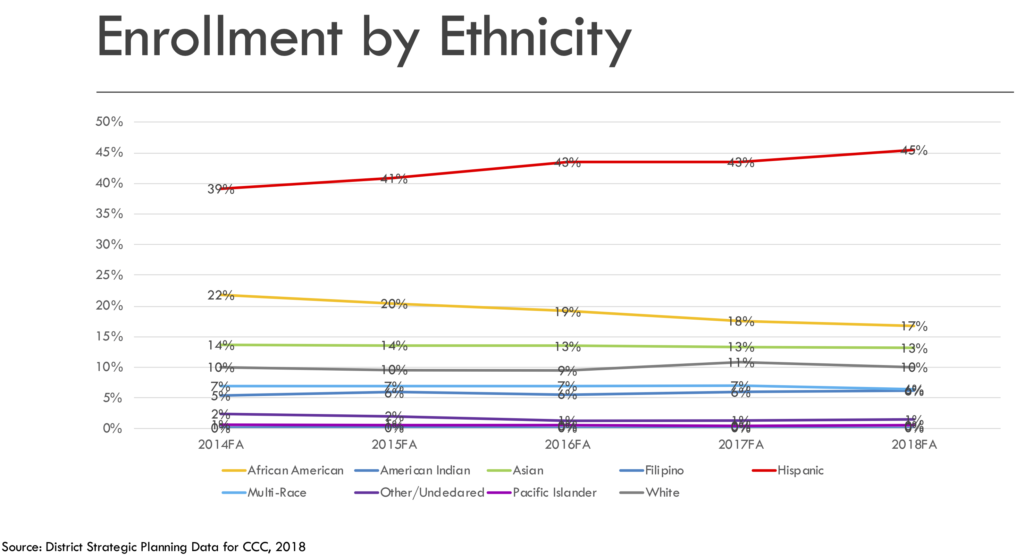Super Tuesday – “It’s the economy, stupid”
Quick governance moment
The ASCCC President John Stanskas just sent out his monthly newsletter. Remember, he will be on campus Thursday March 26 from 2-4PM for our Collegiality in Action visit in GE225. He notes 3 ASCCC topics of focus for this year : Faculty in governance, faculty diversification, and faculty role in Guided Pathways. I’m happy to report that CCC’s Academic Senate has been focused on all three!
I know it’s hard to be part of participatory governance at CCC if the structure isn’t clear. Here is one way of visualizing our structure that President’s Cabinet will be sharing at College Council next week. What do you think of this way of viewing our structures? Does it help? Please share questions or ideas about how to improve this!
Show me the money: some budget issues
This month, the budget committee is making recommendations for $190,000 in expenditures ($100,000 of instructional equipment general funds and $90,000 from the foundation), based consideration of Unit Plans. This is only a small part of CCC’s overall budget, which the committee reviewed at last month’s meeting. You can view the overall budget in these two documents (Total budget, Categorical/Grant funds) Overview in the Feb 19, 2020 folder in the budget agendas. [To find this yourself, start on CCC’s committee page, then pick the budget committee, 2019-2020, agendas, and find the documents there]
I’ve noticed a couple of things so far. First, 30% of CCC’s $40.2M budget comes from categorical or grant funds, and about 24% of CCC’s salaries and benefits are funded this way. About 13% of faculty salaries come from categorical funds, while 30% of classified salaries do. The largest categorical/grant funds are Strong Workforce (~$2.6M), 3SP+Basic Skills+Student Equity= SEAP (~$2.8M), HSI-STEM (~$1.8M), and EOPS-CARE (~$1.2M). I’ll show more about these below.
Where do CCC’s funds come from in the first place?
THE STATE: The general operating fund will soon be based on the Student Centered Funding Formula (SCFF). The general fund allocation will be only 70% based on FTES (it’s been 100%), to one that allocates 20% of funding for students with more needs, and 10% of funding being performance-based. Chancellor SCFF. You may have heard that our district, like many in the Bay Area, will suffer a severe funding deficit once this change occurs. Last June, I had the chance to directly ask Chancellor Eloy Ortiz what he thought about a college like ours, which does serve students with more needs, but whose budget will be smaller as a result of the SCFF. He answered that there must be “structural problems” at the college or district to explain this outcome.
The chancellor’s office recommends that colleges adapt to the new funding formula and the vision for success by implementing Guided Pathways. An ASCCC presentation at the Accreditation institute has some ideas about this. You can also check out the Sept 25 2019 webinar from ASCCC for more connections between guided pathways and SCFF
What about those categorical funds that make up 30% of CCC’s budget ? The major fund sources from the state budget include SEAP, SWF, and GP. These initiatives all have particular limitations on what can be funded, and what accomplishments are expected from each expenditure.
- SEAP (Student Equity and Achievement Plan) : This plan directs the use of 3SP, Basic Skills, and Student Equity funds. Funded activities are expected to improve equity of service to students and achieve equal outcomes for all types of students.
- SWF (Strong Workforce Funds) : This is meant to support career education, with a focus on particular sectors of CA’s economy. Expected outcomes include CTE course or certificate completion, obtaining a job in the field of study, and increased salary.
- EOPS/CARE (Extended Opportunity Programs and Services) : Particular services such as counseling, financial aid and academic support are augmented for students who meet certain criteria of having educational barriers due to social, economic, educational or linguistic factors.
- GP (Guided Pathways) : These funds are for only 5 years, and are meant to support college work in applying the guided pathways framework to improve outcomes defined in the vision for success. This year these funds make up ~$0.4M of CCC’s budget.
THE DISTRICT: Once the SCFF funding for the district is calculated, the state funds our district. The general operating funds pass through a 4CD process with six steps that are detailed in BP 18.01 (district page, then business procedures, then 18.01, see page 4). At last month’s budget meeting, we found it interesting that the district office allocation of 10.534% of 4CD’s overall budget is taken “off the top” (Step 3). We also discussed whether the FTES-based formula for distributing funds to the 3 colleges was an equitable practice, and how this might be changed when the SCFF starts being used.
THE COLLEGE: Understanding whether CCC’s distribution of resources is sensible depends upon two things, I think. First, having a clear idea of what those resources actually are, and second, evaluating whether our resource distribution processes align with the plans our college and our organizational units make for completing the work. This is important for all of us, as the district projects a large funding drop when the ‘hold harmless’ period of the SCFF ends in FY 2022-2023.
Equity Image


